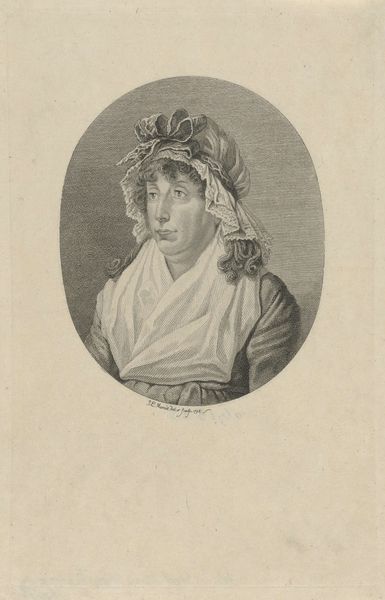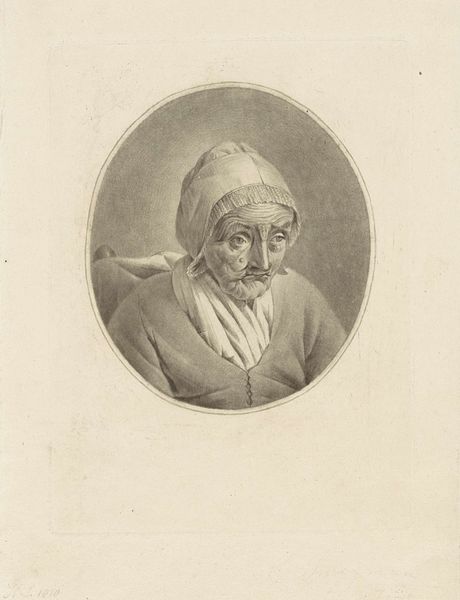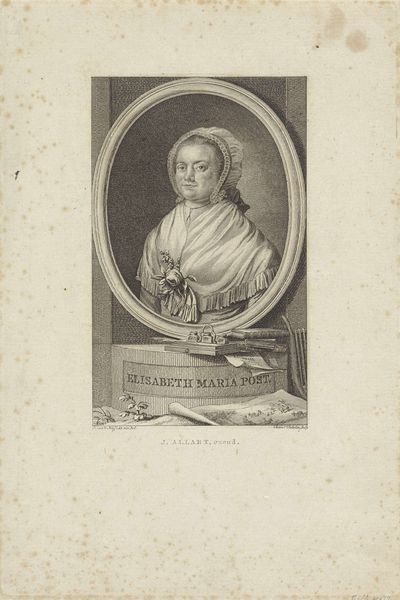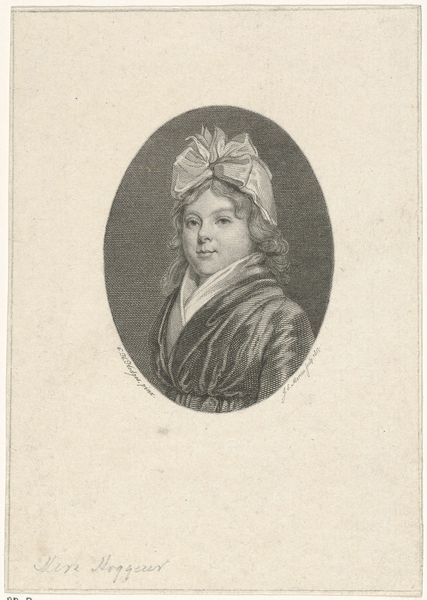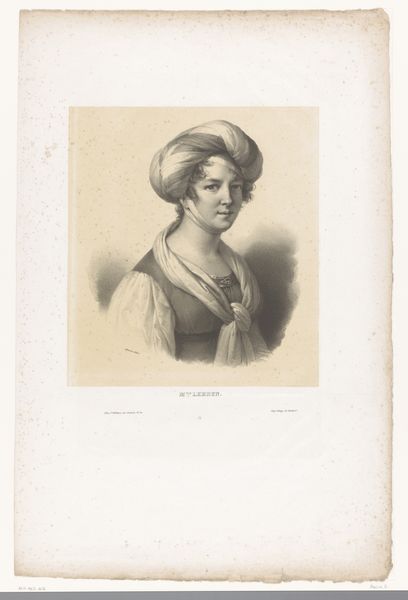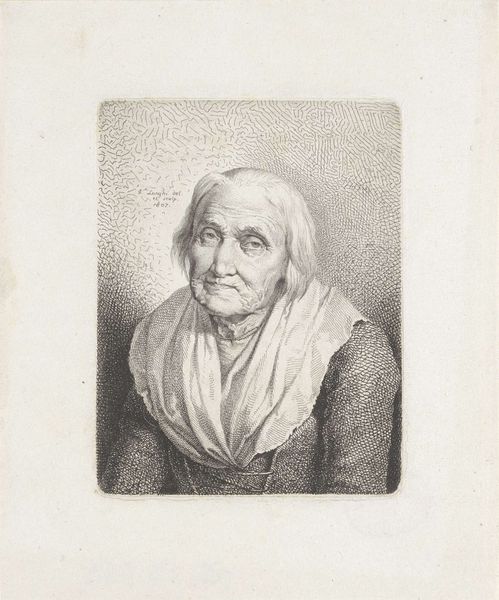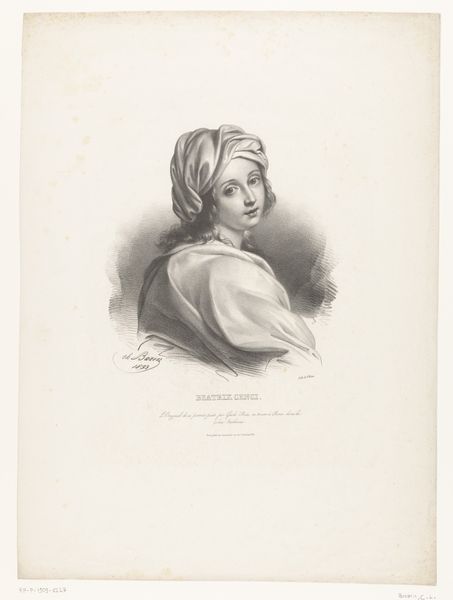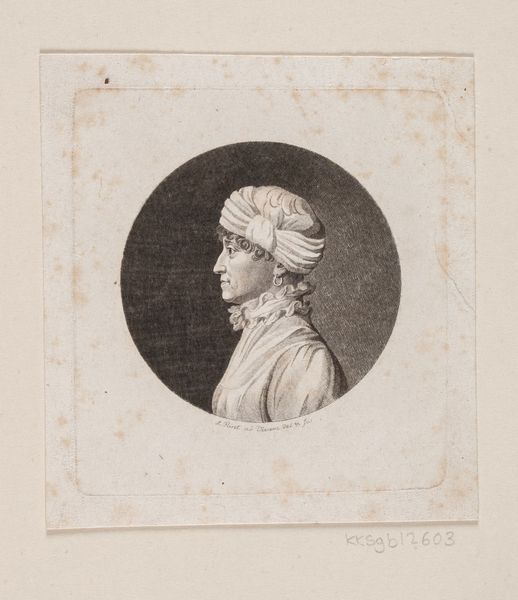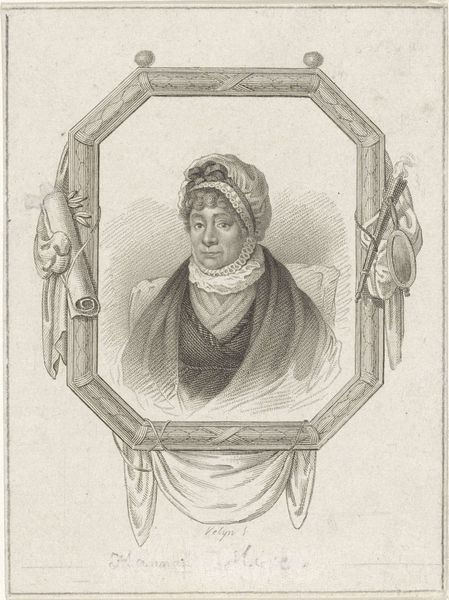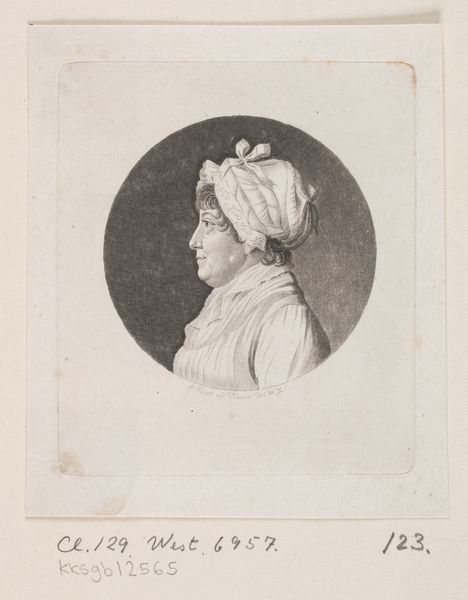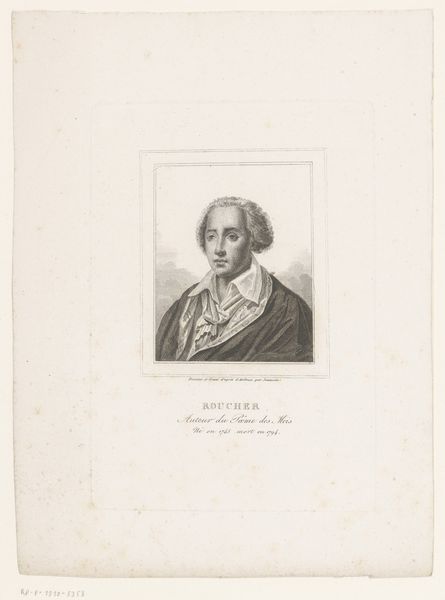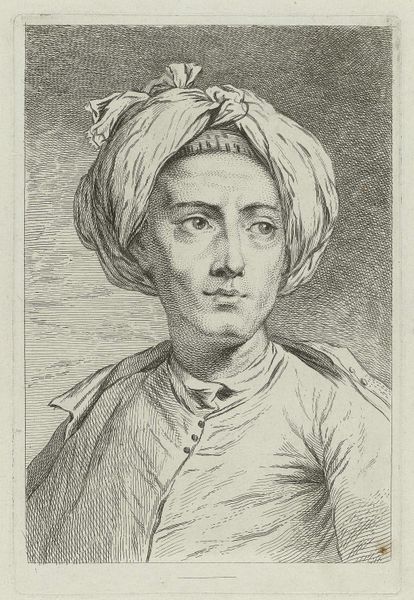
print, engraving
#
portrait
# print
#
engraving
#
realism
Dimensions: 155 mm (height) x 140 mm (width) (bladmaal)
Curator: Before us we have "Ældre dame," which translates to "Elderly Lady," an engraving dating between 1856 and 1909, created by Emil Villumsen. Editor: There's an incredible directness in her gaze. The turban and lace trim detailing on her gown feels… almost theatrical in juxtaposition with her no-nonsense expression. Curator: Precisely. Think about the context. During that period, the bourgeoisie were consolidating their power. Portraiture became less about idealizing the sitter and more about portraying them as grounded and stable, but also self-aware and sophisticated. The turban signals a connection to the exotic, or perhaps to travels and exposure to other cultures, reflecting wealth and global awareness. Editor: It’s fascinating to consider this in light of engraving as a medium. The meticulous, labor-intensive process contrasts with photography’s rise as the bourgeoisie sought a tangible object, a testament to permanence and skillful craftsmanship, rather than an easily reproduced image. The materials speak to a specific social class invested in established methods. Curator: Yes! Consider how portraiture often dictated very specific gender roles. How women should conduct themselves in society and within families. What’s being represented here feels more radical, and disrupts norms through its subversive gaze. The sitter challenges traditional representations of aging, and this work defies easy categorization, resisting any purely documentary impulse through costume and design. Editor: I'm particularly interested in the cross-hatching work around her face. The physical act of etching those lines. Each one individually cut and repeated. This intense concentration elevates a print to something close to fine art, defying its association with simple reproducibility and questioning its purely decorative function. Curator: I agree. Examining it closely allows us to think more deeply about the layers of meaning this seemingly simple portrait encapsulates – it raises profound questions about representation, aging, gender, class, and social change in that particular time period. Editor: I never thought I'd spend so long thinking about one single material print of a middle-aged lady. But considering its meticulous creation changes everything!
Comments
No comments
Be the first to comment and join the conversation on the ultimate creative platform.
